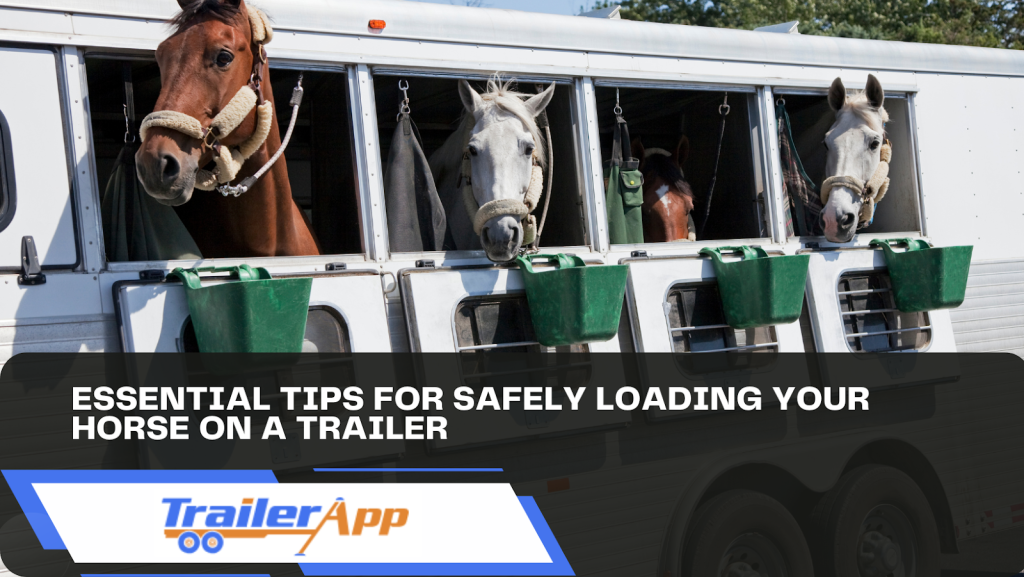Have you ever struggled to load your horse onto a trailer? You’re not alone. Many horse owners find this process stressful, but it doesn’t have to be. Safety should always come first when transporting your horse, and a well-maintained trailer plays a big role in that.
Did you know that 49% of horse owners use trailers, with the two-horse straight-stall trailer being the most common? While trailers are convenient, transport vehicle malfunctions account for 68% of horse-related travel injuries. A faulty trailer can put both you and your horse at risk.
In this blog post, we’ll guide you through essential tips to safely load your horse onto a trailer. From preparing your trailer to ensuring your horse feels comfortable, these steps will help make the process smoother and safer for everyone.
Preparing Your Trailer for Safe Loading
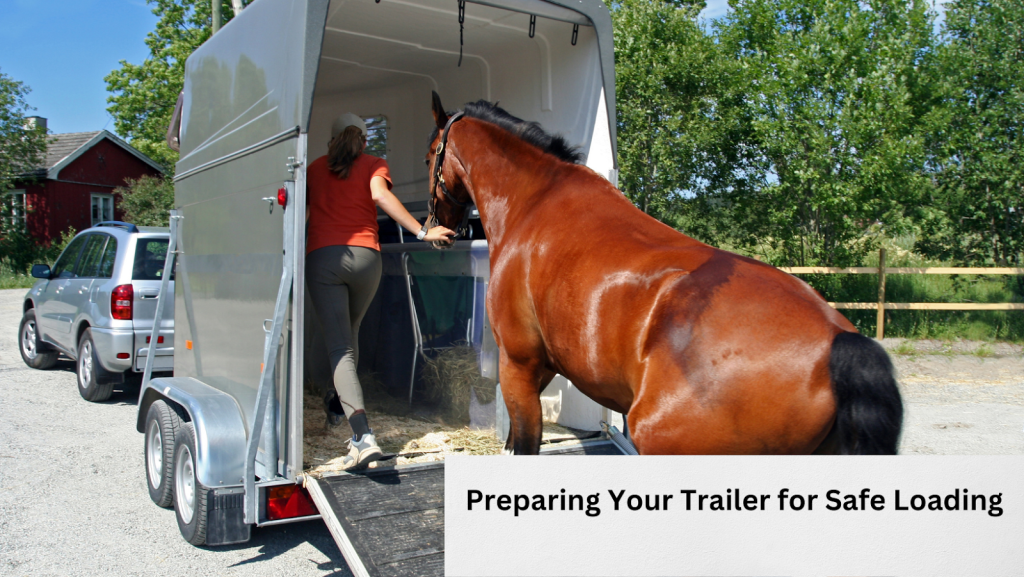
Before loading your horse, ensuring your trailer is in top condition is essential for a safe and stress-free journey. A well-maintained trailer reduces the risk of injuries and transport-related issues.
From checking the structure to having the right equipment, these steps help keep your horse secure and comfortable.
Inspect the Trailer’s Condition
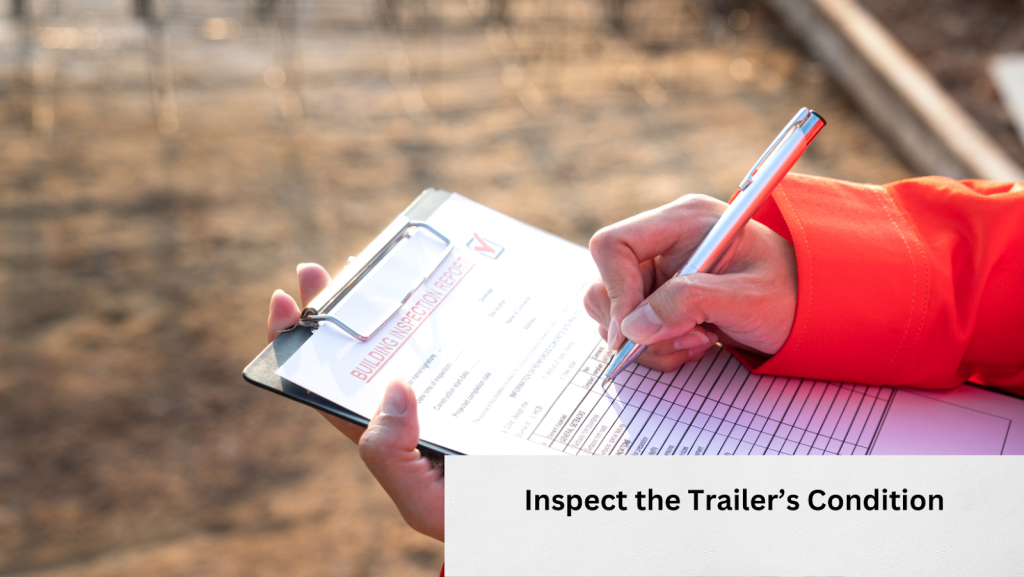
Before loading your horse, thoroughly inspect the trailer to ensure it is roadworthy. Start by examining the exterior for any rust, dents, or weak spots, particularly around welds and joints. Rust can weaken the structure, increasing the risk of failure during transport.
Next, check the tires for wear and tear. Look for cracks in the rubber, low tread depth, or signs of dry rot. Trailer tires should be properly inflated to the manufacturer’s recommended PSI, as underinflation increases the risk of blowouts. While checking the tires, inspect the wheel bearings—grinding noises or excessive play could indicate the need for maintenance.
Brakes and lights are crucial for safety. Test the braking system to ensure it engages evenly and smoothly. Make sure all exterior lights, including brake lights, turn signals, and running lights, are fully functional to keep you visible on the road.
Make Sure the Interior is Safe
Inside the trailer, remove any sharp objects, protruding screws, or loose hardware that could injure your horse. Even minor hazards can cause serious wounds in a confined space.
Ventilation is key to keeping your horse comfortable. Ensure that vents and windows are open and unobstructed to allow fresh air circulation. Overheating can cause stress and health issues, especially on long journeys.
For better footing, install non-slip rubber mats. These mats provide traction, reducing the risk of slipping when the trailer is in motion. Clean and dry the mats regularly to prevent bacteria, mold, and ammonia buildup from urine, which can cause respiratory problems.
Have the Right Equipment
Having the right gear makes loading and transporting your horse much safer. Use a well-fitted halter and a strong lead rope for control during loading. The halter should be snug but not too tight to avoid discomfort.
A loading ramp can be a game-changer, especially for hesitant horses. Ensure the ramp is stable, non-slip, and set at a gentle incline. If your trailer doesn’t have a built-in ramp, consider investing in a portable one designed for horse transport.
Safety latches and dividers are essential to keeping your horse secure. Dividers help prevent excessive movement and reduce injury risk during travel. Check all latches to ensure they lock securely and function properly before hitting the road.
At TrailerApp.com, we offer high-quality trailer parts and services to keep your horse trailer in top condition, ensuring a safe and smooth journey.
Steps to Safely Load Your Horse
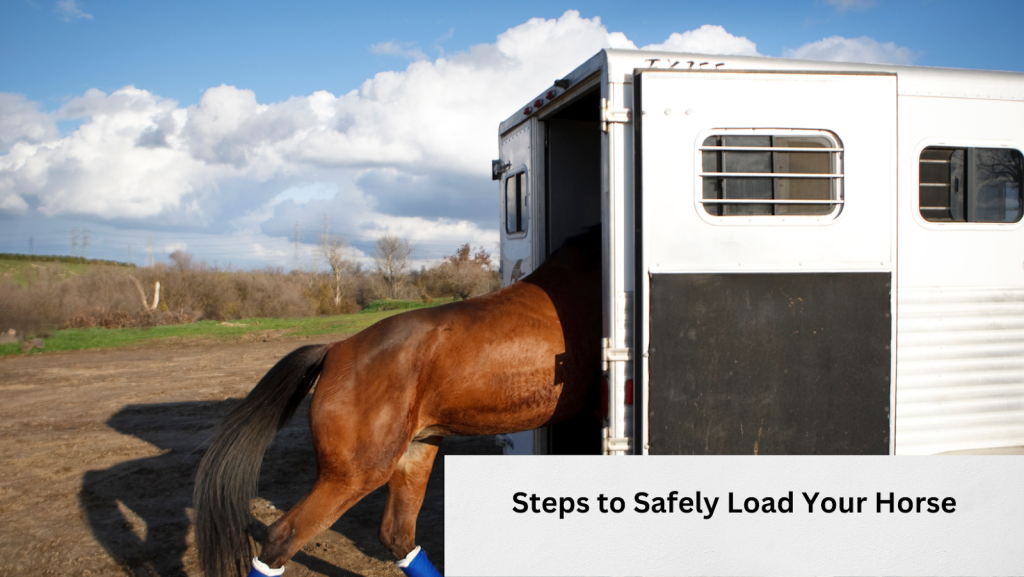
Loading a horse onto a trailer requires patience, confidence, and the right technique to ensure a smooth experience. By gradually familiarising your horse with the trailer, staying calm, and using proper positioning, you can make the process safer and less stressful.
Follow these key steps to help your horse load with ease.
Get Your Horse Comfortable with the Trailer
Before attempting to load, allow your horse to explore the trailer at its own pace. Encourage curiosity by letting them sniff, step in, and get familiar with the space. Using positive reinforcement, such as treats or gentle praise, can help build confidence and make the trailer a less intimidating place.
Use a Calm and Confident Approach
Horses pick up on your energy, so staying calm and patient is key. Approach the trailer with confidence and avoid sudden movements or tension. If your horse senses hesitation or stress, they may become resistant to loading. Speak in a soothing tone and reward small progress to create a positive experience.
Position Yourself Correctly
Proper positioning helps guide your horse into the trailer safely. Stand slightly to the side of the entrance rather than directly in front to avoid getting stepped on or trapped. Hold the lead rope firmly but without tension, giving the horse space to move forward. If needed, have a helper gently encourage from behind without applying too much pressure.
Securing Your Horse for Travel
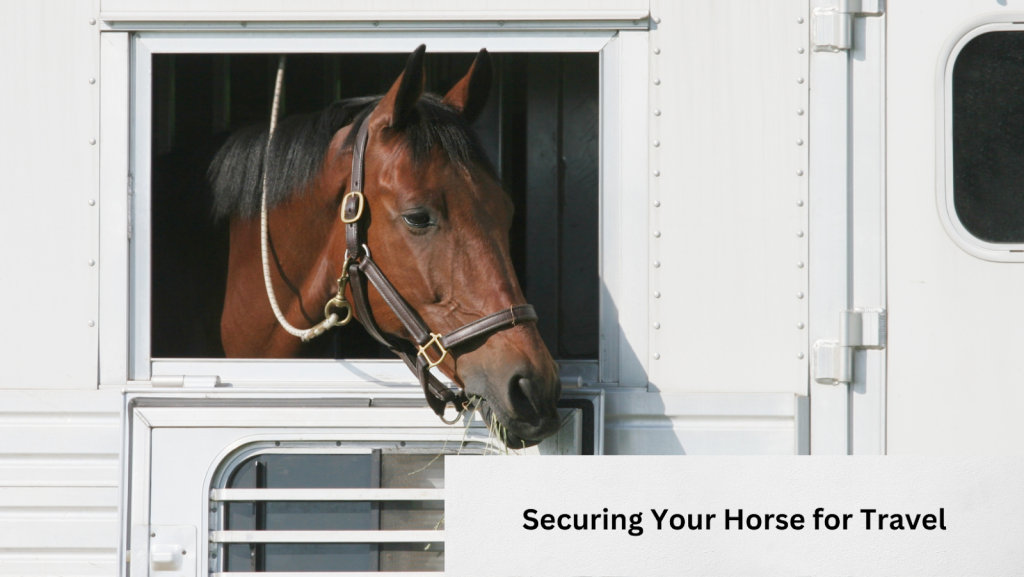
Once your horse is inside the trailer, securing them properly is crucial for a safe and smooth journey. Begin by fastening any dividers or partitions to keep the horse stable and prevent excessive movement during transport. Dividers help maintain balance and reduce the risk of injury, especially when driving on uneven terrain or making turns.
Always tie your horse using a quick-release knot or a breakaway tie to ensure they can be freed quickly in an emergency. Avoid tying them too tightly, as they need enough slack to move their head comfortably while still being secure.
Before hitting the road, double-check all latches, doors, and safety bars to ensure everything is locked and secure. Walk around the trailer to inspect every fastening point, as an unsecured latch could result in a dangerous situation. Taking these extra precautions will help keep your horse safe and relaxed throughout the trip.
FAQs
What do you call a horse trailer?
A horse trailer is often referred to by alternative names, such as a horse float, livestock trailer, or equine transport trailer. These terms are commonly used depending on the region and type of trailer.
How to get a horse on a trailer?
Loading a horse onto a trailer requires patience and calmness. Begin by ensuring the trailer is securely parked and the ramp is fully extended. Lead the horse towards the ramp, using gentle encouragement, and allow it to enter at its own pace. Make sure to secure the door once the horse is inside, checking for a safe and comfortable space for travel.
How long can a horse stay on a trailer?
A horse should not remain on a trailer for more than 8 hours to ensure its health and safety. During longer trips, it is important to take breaks every 2-4 hours for water, feed, and rest. This helps reduce stress and prevent fatigue during travel.
Conclusion
In summary, loading your horse onto a trailer can be a smooth and safe process when you follow the right steps. From ensuring your trailer is in top condition to using the right equipment and maintaining a calm, confident approach with your horse, every detail matters. Regular trailer maintenance, including checking for structural integrity, proper tire pressure, and working brakes, is crucial for preventing accidents and ensuring a safe journey.
By investing time in both your horse’s comfort and the trailer’s safety, you help protect your horse and yourself during travel. For quality trailer parts and expert services that help maintain your trailer’s safety and reliability, TrailerApp.com is here to support you and your horse on every trip!

